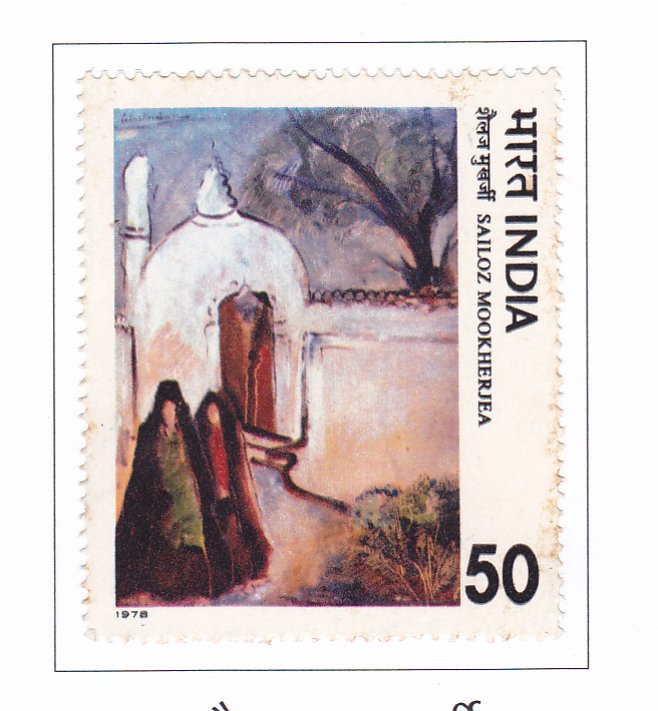Sailoz Mookherjea – “The Mosque”

Technical Data
| Stamp Set | Modern Indian Paintings |
|---|---|
| Date of Issue | March 23, 1978 |
| Denomination | 50 p |
| Quantity | 3,000,000 |
| Perforation | comb 14 |
| Printer | Security Printing Press, Nashik |
| Watermark | No Watermark |
| Colors | Multicolor |
| Catalog Codes |
Michel IN 756 Stamp Number IN 793 Yvert et Tellier IN 552 Stanley Gibbons IN 883 |
| Themes | Mosques | Paintings |
The narrative of contemporary Indian art is indeed a compelling one, emerging against the backdrop of a millennia-old artistic tradition. Despite facing numerous challenges, its development has been nothing short of spectacular. While the roots of contemporary Indian art can be traced back to earlier figures like Abanindranath Tagore, Ravi Verma, and the Company School, it truly came into its own during the post-Independence period.
Characterized by a diverse range of expressions, contemporary Indian art may initially appear bewildering, but with closer examination and understanding, its richness and depth become apparent. Contemporary Indian artists share a bold spirit of adventure and a profound commitment to artistic freedom, coupled with an eclectic approach to technical challenges and a strong sense of individualism—a hallmark of the modern age.
The pioneers of contemporary Indian art, including Rabindranath Tagore, Abanindranath Tagore, Nandalal Bose, Jamini Roy, and Amrita Sher Gil, have left an indelible mark on the artistic landscape of India, their contributions immortalized in the annals of art history. Following in their footsteps, figures like Sailoz Mookherjea have continued to push boundaries and make significant contributions to the evolution of Indian art.
Sailoz Mookherjea, with his diverse experiences and deep connections to both the people and the environment, created works that were deeply personal yet universally resonant. His artistic journey, marked by extensive travel and exploration, exemplifies the spirit of experimentation and innovation that defines contemporary Indian art.
The decision of the Indian Post and Telegraphs Department to honor modern Indian paintings through a series of special postage stamps is a fitting tribute to the enduring legacy and continued vibrancy of contemporary Indian art. As the search for artistic expression continues and new voices emerge, there is no doubt that contemporary Indian art is entering a new phase of maturity and significance on the global stage.
